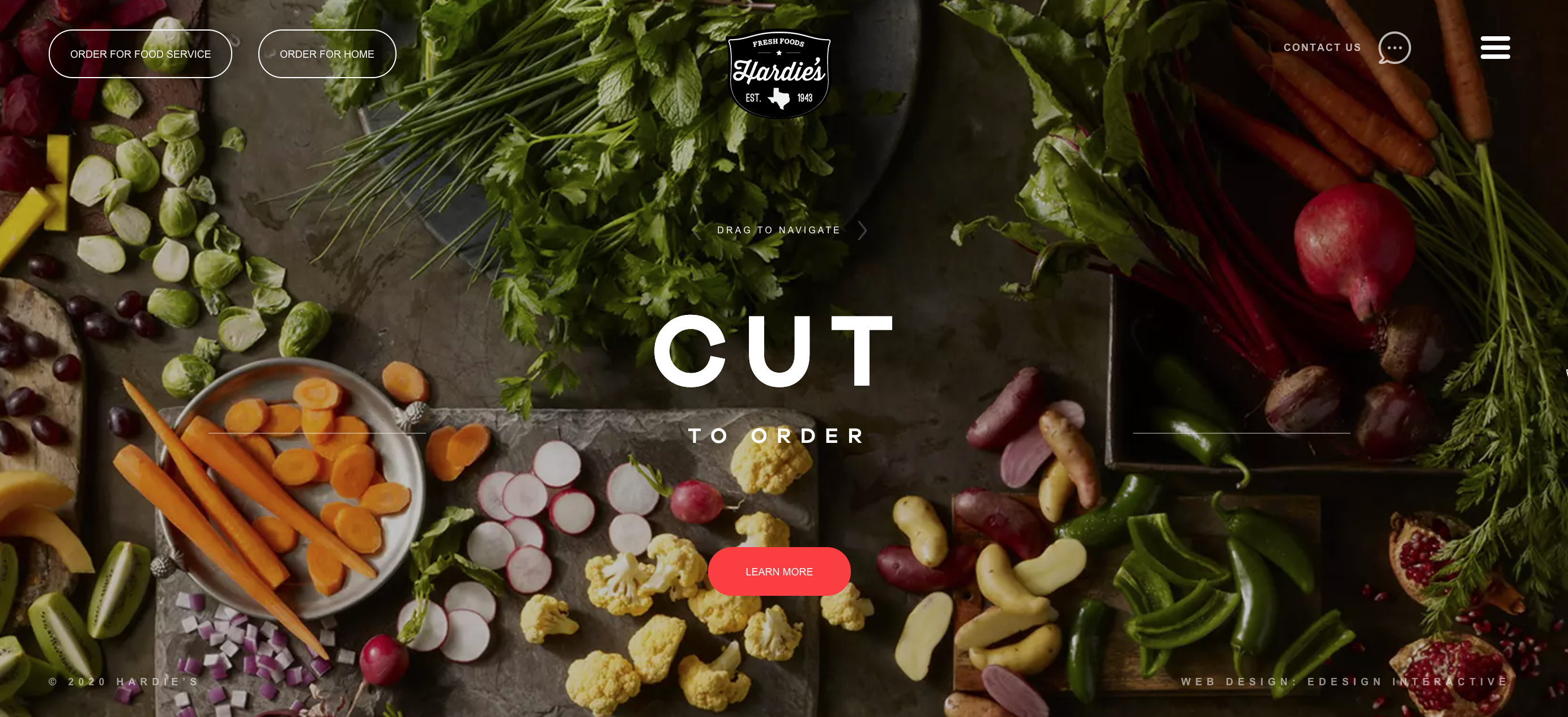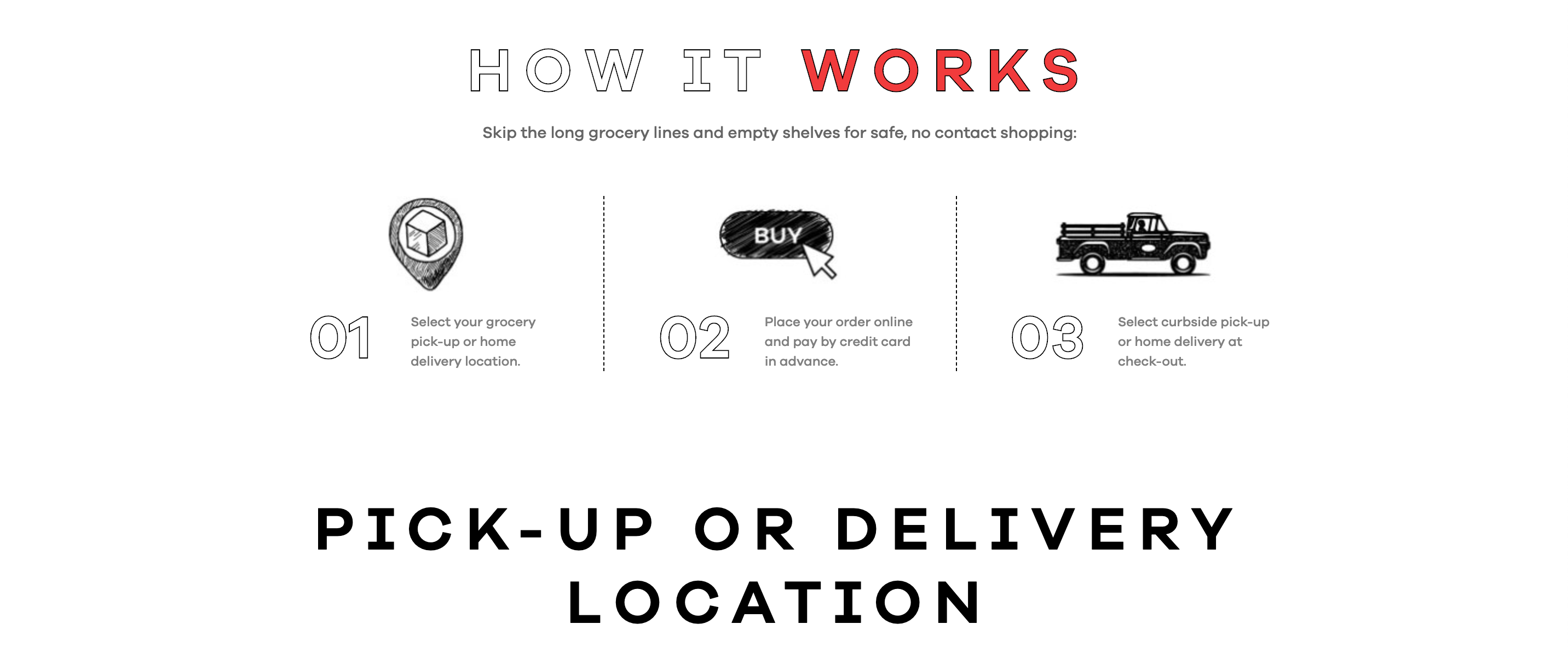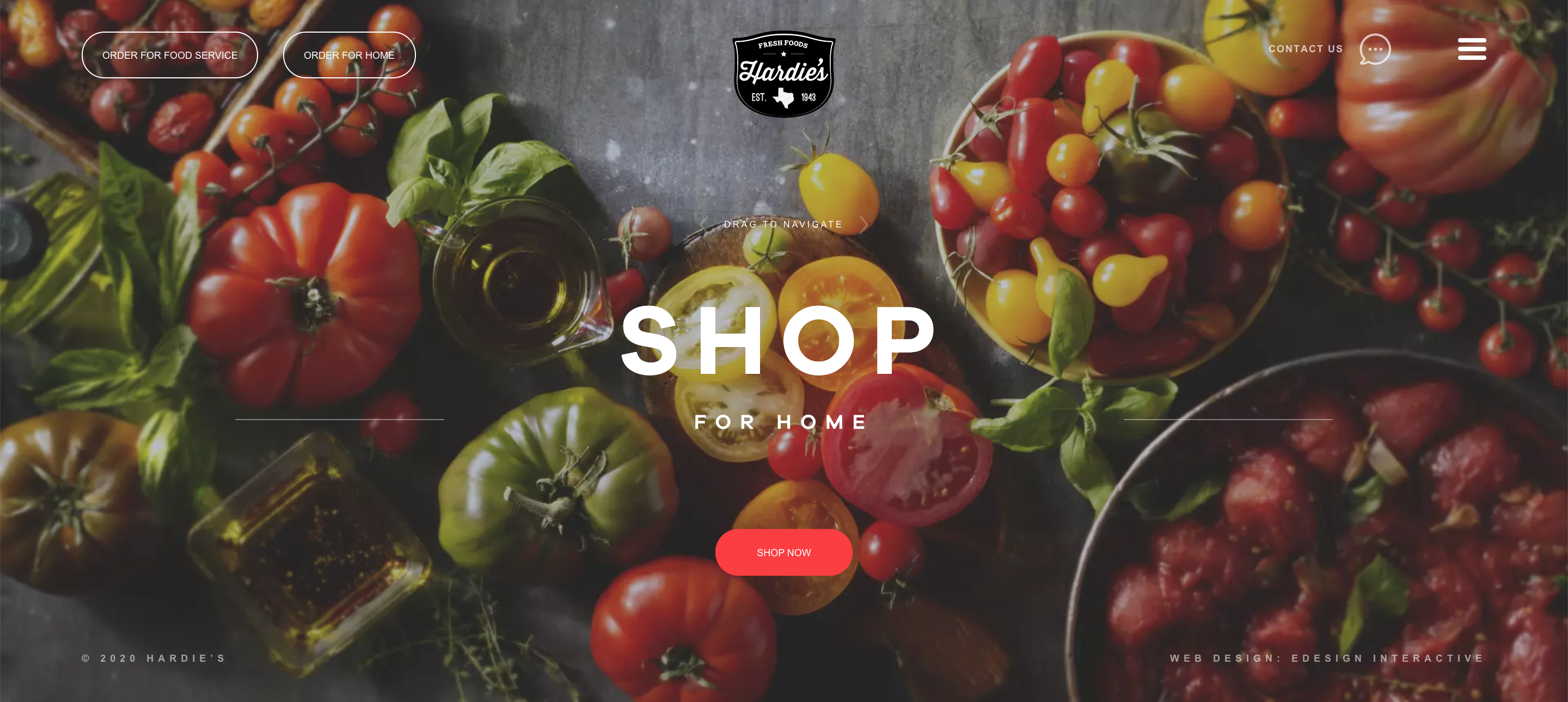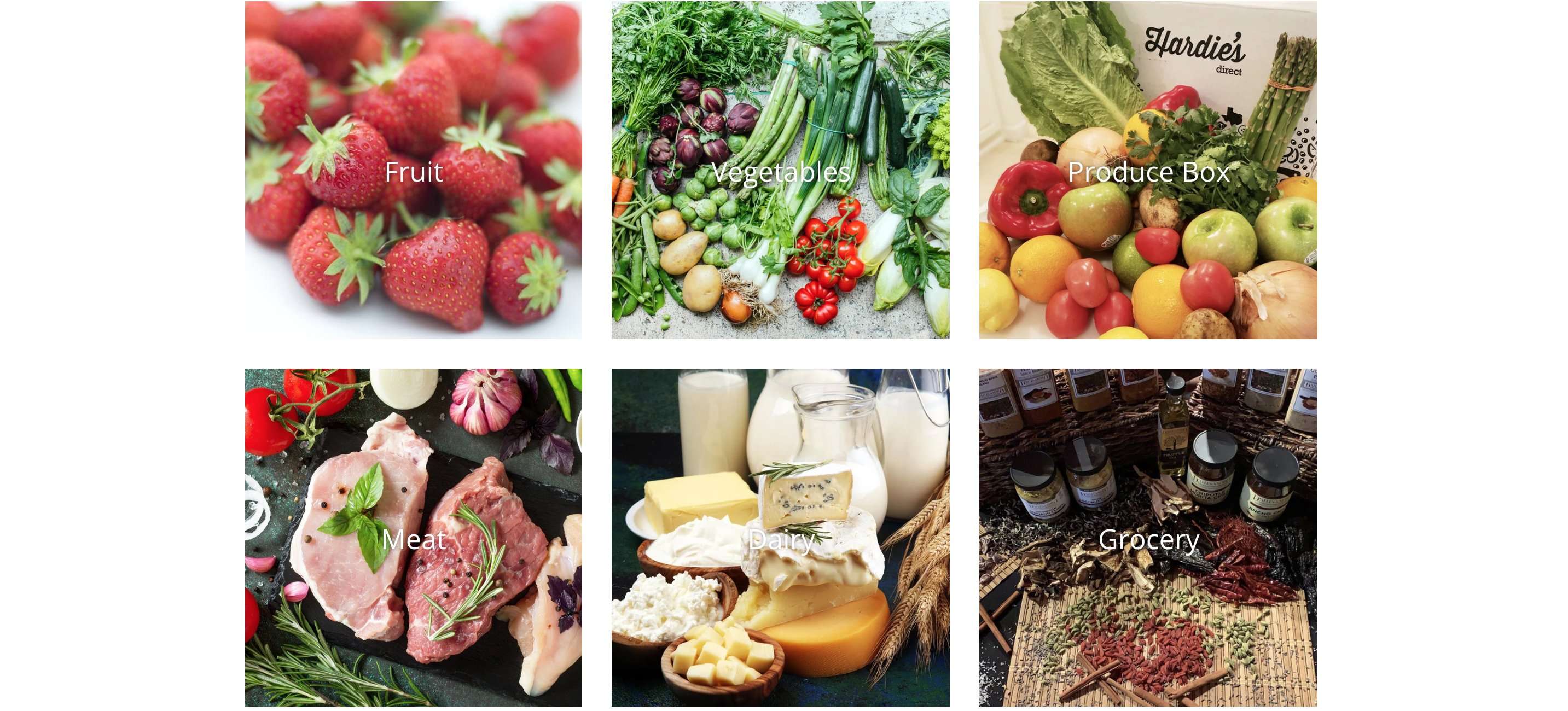 Hardie’s realized they needed to take action to survive the COVID-19 crisis.
Hardie’s realized they needed to take action to survive the COVID-19 crisis.
Covid-19 has created a great deal of economic stress across a wide range of industries. Many companies have downsized, while others have gone out of business. A few forward-thinking brands, however, have turned the current economic crisis into an opportunity.
Hardie’s Fresh Foods is one such positive example. After watching their sales plummet during lockdowns, Hardie’s took the bold decision to pivot their entire business from B2B to B2C and tap into a new market.
eDesign Interactive has been the digital agency of record for Hardie’s for several years, and we are the design studio behind Hardies.com. We were recently asked to strategize and launch an SEM campaign to boost their newly established line of business.
Let’s explore Hardie’s digital transformation to illustrate how to create awareness for your brand and boost online sales.
Meet Hardie’s
Hardie's Fresh Foods Co. is a family-owned business with a long-standing history in the fresh produce industry. The company has been providing farm-grown fruits and vegetables, artisan cheeses, and high-quality meats to chefs and retailers since 1943. Hardie’s has four distribution centers, a fleet of more than 150 trucks, and 163,000 square feet of refrigerated warehouse space across Texas. The company is an established business and a leader in the restaurant produce supply industry.
 Hardie’s management decided to pivot their entire business from a purely B2B company to a B2C brand.
Hardie’s management decided to pivot their entire business from a purely B2B company to a B2C brand.
COVID-19 Challenges
Hardie’s sells primarily to restaurants, offering high-quality products like wagyu beef and artisan cheeses and dairy, including a variety of made-in-Texas items. These are high-end specialty products, with a higher price tag, used by top chefs, and most definitely not found at the local supermarket or on Amazon.
Given the many statewide lockdowns in the US, and specifically in Texas where restaurants have closed or switched to take-out only, Hardie’s bottom line has been seriously impacted since the beginning of the pandemic. The longer the pandemic continued, the more Hardie’s realized they needed to take action to survive the crisis.
A New Business Strategy
The management team decided to pivot their entire business from a purely B2B company selling produce to restaurants to a B2C brand that also offers restaurant-quality food to end-consumers.
With people shopping less, on average making one trip per week to the supermarket, there has been a big demand for home delivery. Hardie’s took the bold decision to align with this new demand and offer gourmet ingredients to Texans living near their three distribution centers by either home delivery or warehouse pick-up. Opening their business to the general public was a risk as it positioned the company in the unchartered waters of a brand new market and consumer base.
To start, Hardie’s Fresh Foods created Hardie’s Direct Online Grocery. The team developed three direct-to-consumer online stores for the greater Austin, Dallas, and Houston areas. The website experience, built on Shopify, is very simple. Online users can select their items and schedule a pick-up or delivery. The eCommerce experience provides Hardie’s with a new platform to sell products directly to consumers (DTC).

The website experience, built on Shopify, is very simple.
As a B2B company, Hardie’s had never connected directly with consumers and did not have a database of such users. Consequently, their main challenge was finding their new consumer base and learning how to communicate their newly refined business strategy. They reached out to us for professional assistance and tasked our marketing team based in Morristown, New Jersey, was tasked with creating a digital campaign built for brand awareness and sales.
Let’s talk about how we created Hardie’s campaign and optimized their website to build brand awareness online.
SEM Campaign and SEO Recommendations
Hardie’s new audience is individuals with a higher household income and “foodies” who take their grocery shopping seriously. Even though Hardie’s iconic trucks were widely seen around town, the majority of Texas residents knew them as B2B brand, and therefore Hardie’s wasn’t considered an option for home delivery.
To create awareness, we planned a Google Search campaign, with remarketing, for key zip codes surrounding the 3 distribution centers. We strategized and launched a full SEM campaign, with some social media blitz’s that worked with a highly-optimized landing page design.
 A highly-optimized landing page design was part of the SEM campaign.
A highly-optimized landing page design was part of the SEM campaign.
It’s sounds cliché, but there is no magic formula for a successful marketing campaign, especially when a business pivots towards a completely different audience. The keywords a brand uses, the search questions it targets with content, ads, and coding, and the visuals it promotes in the context of its channels all play a big role. The options and lessons are endless.
We quickly saw that Hardie’s competition in the digital space was not just local supermarkets. They were going up against big-time companies like Amazon, Instacart, and Walmart, who buy up ads quickly, have extended reach, and are already established in the food delivery business.
We also learned social was not a channel that would yield immediate results. People were searching for food solutions now, and Google was indicating rapid growth in food delivery searches in Texas. We had to determine the right balance of data-informed ad copy, placements, and context that paired with these new consumer behaviors. Google Search was chosen as our primary channel based on those early discoveries.
We also made a series of onsite SEO recommendations to help improve the long-term ranking of Hardie’s new direct-to-consumer shops. Onsite SEO can increase paid keyword quality scores. Paid keyword metrics use a combination of bidding, performance, and optimization to determine the relevance of each keyword to the individual search query. Higher quality scores contribute to higher ad positioning and lower cost per click.
For example, we added specific product searches with an additional focus for Hardie’s vegetable and meat collections. This small SEO change was important as it led to an improved click-through rate and onsite engagement.
 Hardie’s onsite SEO targeted a brand new market and consumer base.
Hardie’s onsite SEO targeted a brand new market and consumer base.
As mentioned, Hardie’s new service is competing with B2C brands like Walmart, Amazon, and Instacart — all multi-million dollar businesses selling fresh food directly to consumers. To differentiate from them, our copy and targeting amplified Hardie’s as a local, Texas-first business, offering artisanal and specialty items that were once only available to restaurants.
We use performance data to continuously update the best performing keyword matches, and the campaigns are starting to deliver results, building on awareness from the onset of launch.
You too can increase your website traffic by boosting your onsite optimization. Updating your page titles, descriptions, and slugs to properly align with an overall strategy can improve a site drastically. Here are four simple places you can add keywords to increase your website visibility and PPC quality scores:
· page titles
· meta descriptions
· image ALT tags
· page body content
Results
The initial campaign underperformed for two months, mostly because we had to educate consumers about Hardie’s new business offerings and demonstrate the brand as a trustworthy DTC source. Interested users showed initial caution towards buying expensive specialty items without knowing if the quality and taste were up to par, or if the products would be fresh when received.
Early data showed small orders were followed by larger orders and greater than 50% repeat purchase pattern, indicating some high-end products are not an immediate buy until a relationship is fostered.
We monitored many metrics, including total website visits, direct traffic, paid search, referrals, organic search, social, transactions recorded, Google ads, transaction completions, transaction conversion rate, transaction revenue, and CPC transaction completions.
After overcoming the initial challenges, the campaign is now generating positive results. Each month, we are seeing increases in first-time purchases, and the quality of Hardie’s products does the rest.
 Product-specific keywords improved click-through rates and onsite engagement.
Product-specific keywords improved click-through rates and onsite engagement.
Takeaways
Digital advertising cannot be set on autopilot. A campaign that was successful in the past may not yield similar results under different conditions, like those we’re experiencing during COVID-19. Brands must be willing to evolve to meet changes in the economic landscape and in consumer behavior.
Brands must always be on the lookout for improvements to their digital marketing strategies. This means continually assessing what’s working and what’s not, and then making the necessary adjustments to create and maintain an edge over the competition.
From experience, we see established businesses move much too slowly when it comes to digital transformation. Businesses that dominate their industry have an even harder time changing course. They tend to be overly reliant on routine, a singular frame of reference, and business-as-usual thinking. Past success can blind decisions and create resistance to change. In the case of Hardie’s, we can help the business make changes quickly and augment an internal team with a full roster of talented digital experts from New Jersey to Europe.
Today’s fast-moving world is teaching us that companies must also be willing to move quickly. There’s no room for inertia and resistance. To survive, your organization must always look forward, embrace strategic thinking, and meet the ever-changing needs of your customers.
For help with your next digital campaign, just say hello@edesigninteractive.com.
See more work from our New Jersey website design team.